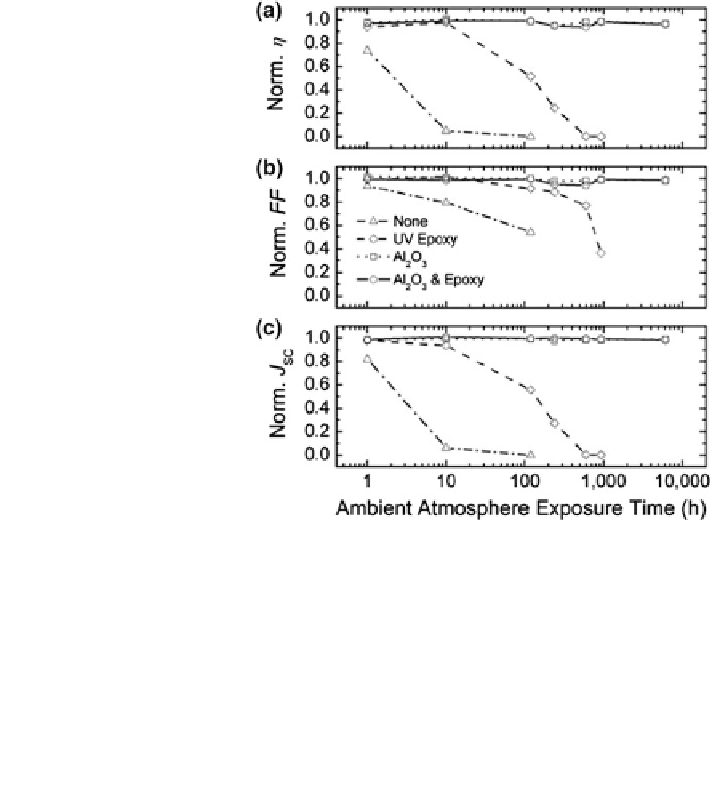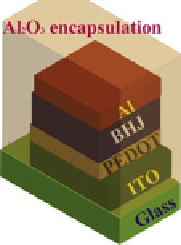Environmental Engineering Reference
In-Depth Information
Fig. 6.21 Relative change in
a g, b FF, and c J
sc
of solar
cells with various types of
encapsulation from the initial
values after exposure to
ambient atmosphere. Four
devices are shown with the
following types of
encapsulation: no
encapsulation (dash-dotted
line, triangle); UV epoxy
(dashed line, diamond);
Al
2
O
3
(dotted line, square);
and Al
2
O
3
and UV epoxy
(solid line, circle). The values
for each device are
normalized to the initial value
for that device [
107
].
(Reprinted with permission
from Ref. [
107
]. Copyright
[2007], American Institute of
Physics)
Fig. 6.22 Schematics of the
device structure encapsulated
with Al
2
O
3
. BHJ is
P3HT:PCBM [
105
].
(Reprinted from [
105
], with
permission from Elsevier)
on polymer OPVs [
111
]. The results show that single parylene coating layer is not
efficient to protect the degradation of P3HT:PCBM-based devices due to its
photochemical reactions caused by oxygen. More importantly, the authors develop
multilayer
barriers
consisting
of
parylene
and
Al
2
O
3
to
implement
the
full
protection of the devices from degrading even under illumination.
It is promising that Dennler et al. firstly studied the shelf lifetime of MDMO-
PPV:PCBM-based OPVs encapsulated by flexible and transparent ultra-high
barrier poly(ethylene naphthalate) (PEN) grown by plasma enhanced chemical
vapor deposition (PECVD) [
19
]. Figure
6.23
shows the cross-sectional view of
OPV device and a photo of a bent device. Such an encapsulation could improve the
shelf lifetime of OPV device with 30 9 57 mm
2
from a few hours to the range
beyond 3000 h.


Search WWH ::

Custom Search